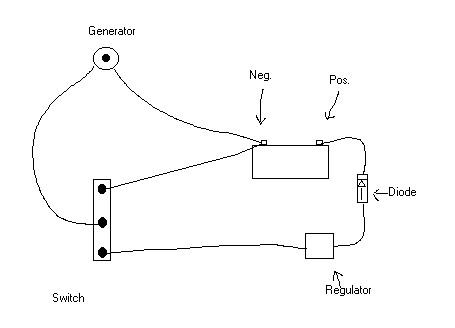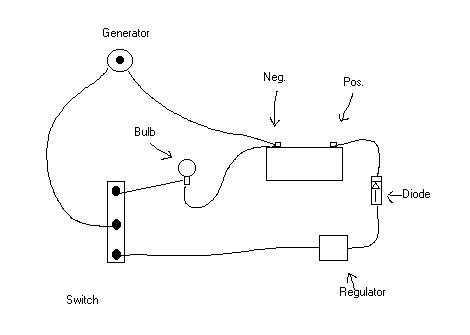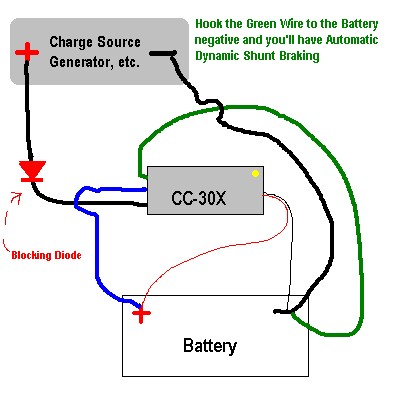Simple Shunt Braking System
Since most of my customers are amateur builders I thought it
would be nice to share some low cost ways that I have found to
handle over speed wind conditions and storms.
Before I get into the details of braking lets figure out what
kind of motor you have so we will know which type of braking system
to use.
Turn the shaft with your hand on your DCPM motor. Note how
easy or hard it turns. Now hook the two wires from the motor
together and see if you can still turn your shaft. If you
cannot turn your shaft this brake system should be able to hold your
generator still in most winds.
If you can still turn it but it is just harder to turn this brake
system will only serve to slow down your generator in higher winds,
it may or may not be able to prevent damage.
Now with our turn test complete you either have a NO turn or a HARD
turn generator. Keep in mind what your generator is as you
read this section so you will know which configuration below you
need to use.
Output is different on different generators. The more output
your generator can produce the harder braking you will achieve.
After your blades are mounted you can turn the generator again with
the two wires contacting and you should be able to tell if this
brake system will slow, bring to a slow stop, or just flat slam on
the brakes.
Shutting your generator down before a storm is a great
idea. If you know bad weather is in your area or likely, flip
the switch to the brake position and wait it out. That is the
best way to handle it. But what about when you wake up in the
middle of the night and find winds of 50 plus? If you have a
HARD turn generator you can just flip the brake switch on and it
will at least slow and maybe even stop the generator in due time.
If you have a NO turn generator even with the blades mounted you
must use the configuration with the drop resistor or a ballast load
such as a light bulb in the circuit. If you use the
configuration without the resistor or bulb and you just flip the
switch on, on a NO turn generator you might shear your blades right
off at the hub.
That would sink!
By now you know what your generator needs to use this safety
switch. Use the drawing that fits your HARD turn or NO turn
generator.
HARD turn generator
You need 1 single poll double throw switch

Resistor/bulb for NO turn generator
You need 1 single poll double throw switch, and 1 resistor or bulb.

There is an easier option for Dynamic Shunt Braking!
Buy one of my CC-30x Series Charge Controllers and wire it up as
shown below.

See the CC-30x Series Charge
Controllers.
Return to Tips and Tricks
Home
|
![]()